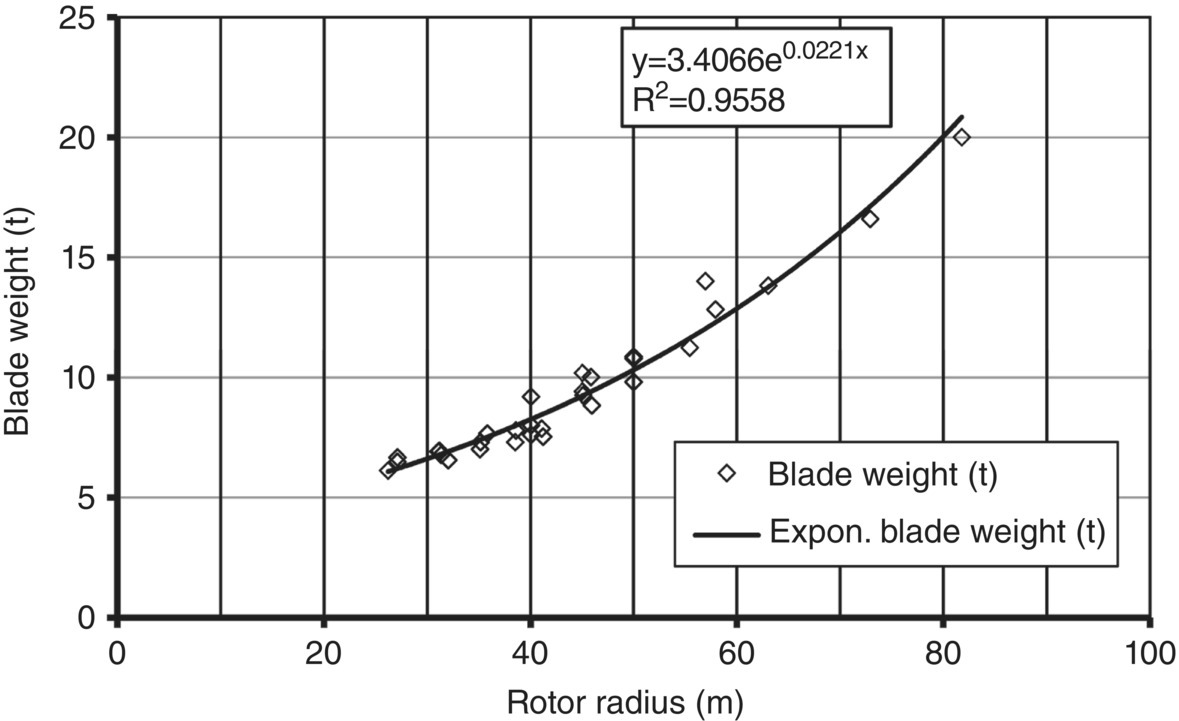5Rotor Blades
Lothar Dannenberg
5.1 Introduction
The rotor blade is a particularly important element of a wind turbine (WT). Its shape is decisive for the capacity yield. It is optimised according to aerodynamic criteria as described, for instance, in Chapter 4. In order to achieve as low a weight as possible for the rotor blade, according to the aerodynamically determined dimensions, an optimising of its strength, that is, the cross-sectional dimensions and the material used, while still retaining the aerodynamic characteristics, is necessary, whereby the weight again has effects on the strength. In this way the use of material and thus the costs of production of the rotor blade are minimised. After the tower and the foundations, the rotor blade is the second most expensive part of the wind turbine; these costs are approximately 16–18% of the overall costs.
Rotor diameters have become ever larger over the past 25 years, from an average of 20 m diameter in 1985 to 120 m today. At present prototypes are being built with a diameter of more than 160 m (status at the end 2011). Whereas for smaller rotors the wind loads dominate the design for strength, for larger diameters the bending moments and the inherent weight are becoming more decisive. The weights of the rotor blades increase exponentially with the blade length (see Figure 5.1).

Figure 5.1 Rotor blade weights as a factor of radius, ...
Get Understanding Wind Power Technology: Theory, Deployment and Optimisation now with the O’Reilly learning platform.
O’Reilly members experience books, live events, courses curated by job role, and more from O’Reilly and nearly 200 top publishers.

